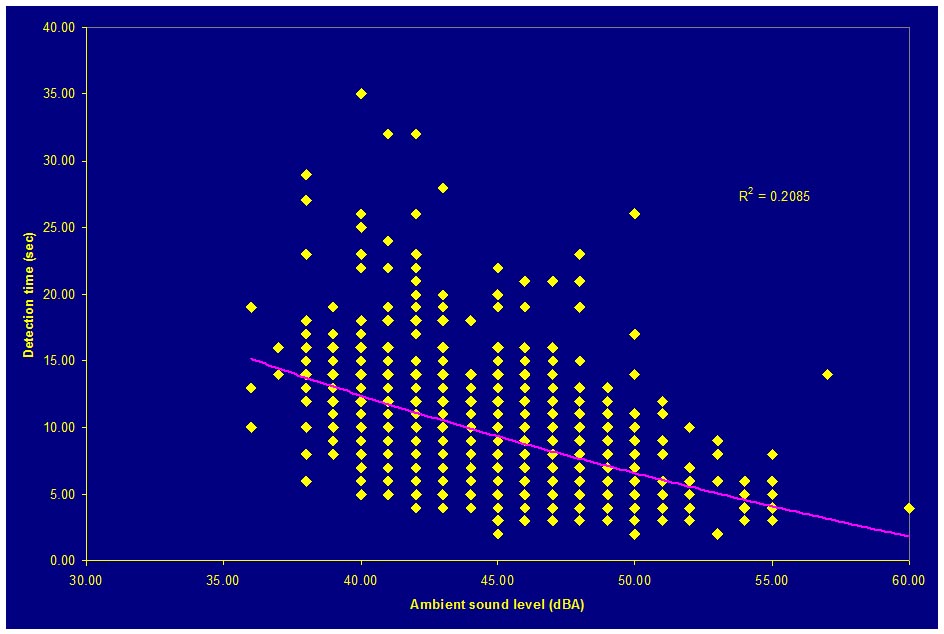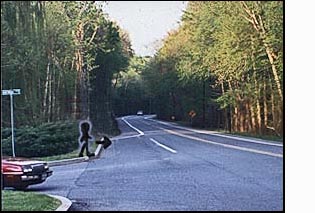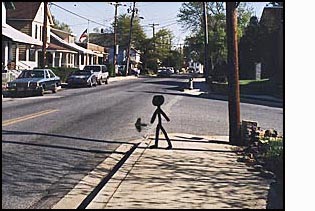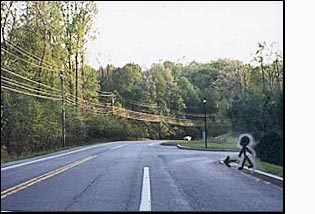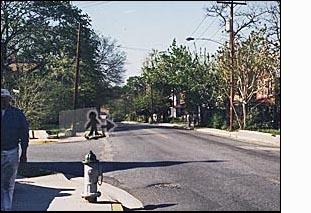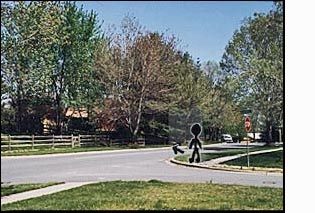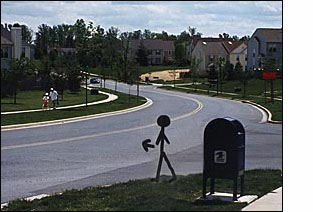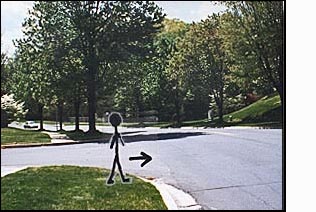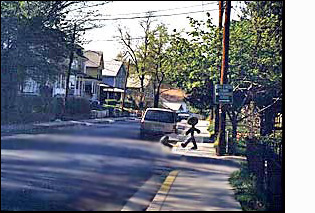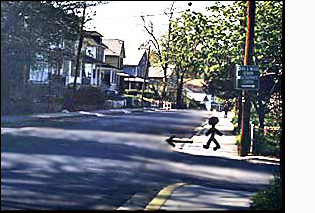PHOTO #1: You said "Yes"
click here for observations).
Return to the Challenge
PHOTO #1: You said "No"
click here for observations).
Return to the Challenge
PHOTO #3: You said "Yes"
Return to the Challenge
PHOTO #3: You said "No"
Click here for a video of this crossing
Return to the Challenge
PHOTO #2: You said "Yes"
click here for observations).
Return to the Challenge
PHOTO #2: You said "No"
click here for measurements of the detection of 36 vehicles from this direction).
Return to the Challenge
PHOTO #4: You said "Yes"
Return to the Challenge
PHOTO #4: You said "No"
Return to the Challenge
PHOTO #3: You said "Yes"
article ), and we found that it was not possible for experienced blind people with normal hearing to hear vehicles from the right until after they appear around the bend.
Even though the speed limit is 25 mph and vehicles go no more than 40 mph around the bend, some of them were not heard until they were only 4 seconds away, which is not enough time for people with normal walking speed to cross.
Click here for a video of this crossing
Return to the Challenge
PHOTO #3: You said "No"
article ), and we found that it was not possible for experienced blind people with normal hearing to hear vehicles from the right until after they appear around the bend.
Even though the speed limit is 25 mph and vehicles go no more than 40 mph around the bend, some of them were not heard until they were only 4 seconds away, which is not enough time for people to cross with normal walking speed.
Click here for a video of this crossing
Return to the Challenge
PHOTO #5: You said "Yes"
Click here for the story.)
Even though the traffic is visible for a long distance, for some strange reason it is not possible to hear them until they reach the bottom of the hill, and by that time some of them are too close and/or fast and would have to slow down to avoid hitting a pedestrian who started to cross when it was still quiet (just before the vehicle could be heard).
Environmental Modifications to Improve Crossings with No Traffic Control ")
Return to the Challenge
PHOTO #5: You said "No"
click here for the story).
Even though the traffic is visible for a long distance, for some strange reason it is not possible to hear them until they reach the bottom of the hill, and by that time some of them are too close and/or fast and would have to slow down to avoid hitting a pedestrian who started to cross when it was still quiet (just before the vehicle could be heard).
Environmental Modifications to Improve Crossings with No Traffic Control ")
Return to the Challenge
PHOTO #4: You said "Yes"
article ), and we found that even though there are trees blocking the view and a gentle bend in the road, whenever it was quiet, blind people with normal hearing could hear the traffic coming from the left well enough to know it's clear to cross that half of the street.
Return to the Challenge
PHOTO #4: You said "No"
article ), and we found that even though there are trees blocking the view and a gentle bend in the road, whenever it was quiet, blind people with normal hearing could hear the traffic coming from the left well enough to know it's clear to cross that half of the street.
Return to the Challenge
PHOTO #7: You said "Yes"
Return to the Challenge
PHOTO #7: You said "No"
Return to the Challenge
PHOTO #6: You said "Yes"
Return to the Challenge
PHOTO #6: You said "No"
Return to the Challenge
Return to the Challenge
Return to the Challenge
go back and try again , or
click here to find the answer .
go back and try again , or
click here to find the answer .
click here .
go back and guess again ,
click here to find the answer .
how loud the vehicle itself was click here to see the graph of the data --
click here to return to the Self-Study Guide .
how loud the vehicle itself was click here to see the graph of the data -- it's a total scatterplot showing no relationships whatsoever.
click here to return to the Self-Study Guide .
click here for a description of the chart).
Well, it makes sense, doesn't it? That's why people say to wait until it is quiet to cross.
click here to return to the Self-Study Guide .
Correlation between ambient sound level
Wall Emerson, R. & Sauerburger, D. (2008) Detecting Approaching Vehicles at Streets with No Traffic Control.
AFB Journal of Visual Impairment and Blindness , Volume 102, Number 12
go back and try again , or
click here to find the answer .
click here .
go back and guess again ,
click here to find the answer .
click here to see the graph of the data --
click here to return to the Self-Study Guide .
the level of ambient sound. click here for a description of the chart).
That's why people say to wait until it is quiet to cross.
click here to return to the Self-Study Guide .
Correlation between ambient sound level
Wall Emerson, R. & Sauerburger, D. (2008) Detecting Approaching Vehicles at Streets with No Traffic Control.
AFB Journal of Visual Impairment and Blindness , Volume 102, Number 12
. . . observe and analyze how well you can hear / see the traffic in THAT situation
and determine if you have enough warning!
The only way to determine if you are in a situation of uncertainty for gap judgment is to
Return to the Self-Study Guide .
home page
